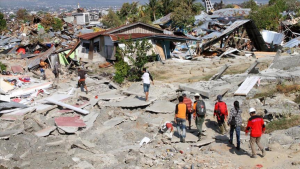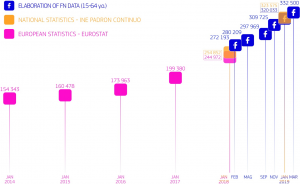Key information
Country/ies
Afghanistan, Albanien, Algerien, Andorra, Angola, Antigua und Barbuda, Argentinien, Armenien, Australien, Österreich, Aserbaidschan, Bahamas, Bahrain, Bangladesch, Barbados, Weißrussland, Belgien, Belize, Benin, Bhutan, Bolivien, Plurinationaler Staat, Bosnien und Herzegowina, Botsuana, Brasilien, Brunei Darussalam, Bulgarien, Burkina Faso, Burundi, Cabo Verde, Kambodscha, Kamerun, Kanada, Zentralafrikanische Republik, Tschad, Chile, China, Kolumbien, Komoren, Kongo, Rep., Costa Rica, Côte d’Ivoire, Kroatien, Kuba, Zypern, Tschechien, Korea, Demokratische Volksrepublik, Demokratische Republik Kongo, Dänemark, Dschibuti, Dominica, Dominikanische Republik, Ecuador, Ägypten, El Salvador, Äquatorialguinea, Estland, Eswatini, Äthiopien, Falkland Islands, Fidschi, Finnland, Former Yugoslavia, Frankreich, Gabun, Gambia, The, Georgien, Deutschland, Ghana, Griechenland, Grenada, Guatemala, Guinea, Guinea-Bissau, Guyana, Haiti, Honduras, Ungarn, Island, Indien, Indonesien, Iran, Islamische Republik, Irak, Irland, Israel, Italien, Jamaika, Japan, Jordanien, Kasachstan, Kenia, Kiribati, Kuwait, Kirgisistan, Laos, Demokratische Volksrepublik, Lettland, Libanon, Lesotho, Liberia, Libyen, Liechtenstein, Litauen, Luxembourg, Madagaskar, Malawi, Malaysia, Malediven, Mali, Malta, Marshallinseln, Mauretanien, Mauritius, Republic of, Mexiko, Mikronesien, Föderierte Staaten von, Monaco, Mongolei, Montenegro, Marokko, Mosambik, Myanmar, Namibia, Nauru, Nepal, Niederlande, Neuseeland, Nicaragua, Niger, Nigeria, Nordmakedonien, Norwegen, Oman, Pakistan, Palau, Panama, Papua-Neuguinea, Paraguay, Peru, Philippinen, Polen, Portugal, Katar, Korea, Rep., Republik Moldau, Rumänien, Russische Föderation, Ruanda, St. Kitts und Nevis, Saint Lucia, St. Vincent und die Grenadinen, Samoa, San Marino, São Tomé und Príncipe, Saudi-Arabien, Senegal, Serbien, Serbia and Montenegro, Seychellen, Sierra Leone, Singapur, San Martín (parte Holandesa), Slowakische Republik, Slowenien, Salomonen, Somalia, Südafrika, Südsudan, Spanien, Sri Lanka, Occupied Palestinian Territory, Sudan, Suriname, Schweden, Schweiz, Syrien, Arabische Republik, Tadschikistan, Tansania, Vereinigte Republik, Thailand, Timor-Leste, Togo, Tonga, Trinidad and Tobago, Tunesien, Türkiye, Turkmenistan, Tuvalu, Uganda, Ukraine, Vereinigte Arabische Emirate, Vereinigtes Königreich, Vereinigte Staaten von Amerika, Uruguay, Usbekistan, Vanuatu, Venezuela, Bolivarische Republik, Viet Nam, Jemen, Sambia, Simbabwe
Data sources
Summary
The project consists of developing an open statistical software package using historical data on human displacement post-disasters to forecast future displacement trends after catastrophes, specifically, earthquakes and cyclones. It aims to help governments and international organizations more rapidly allocate resources to facilitate recovery, estimate more accurately the displaced population, predict potential settlement "hotspots," and estimate the optimal shelter locations for a precise number of people.
The software package has two main two components:
- a back-end system that combines the data, a model, and state-of-the-art statistical methods into a predictive tool, and
- an interactive front-end system that visualizes the data and predictions.
Results
The tool has predicted past displacement estimates for over 100 earthquakes in 38 different countries with at least ten times more accuracy than the world-leading risk models produced by the United States Geological Survey (USGS) and the Global Disaster Alerting Coordination System (GDACS).
The tool's software, which uses displacement estimates based on mobile phone data provided by organisations such as Flowminder or Facebook Data for Good, has produced a detailed mapping of the returned and displaced populations over time. This methodology has been implemented with data-holders such as Flowminder and Meta Data for Good.
The tool is currently being integrated into the Internal Displacement Monitoring Centre (IDMC)’s risk models and there are discussions to integrate it into the International Federation of the Red Cross (IFRC)’s risk models.
Last modified
28. Juli 2022



